Airlines, Airports and Airliners News - 6 to 12 July 2020
Compiled by Willie Bodenstein

HOW HEPA FILTERS HAVE BEEN PURIFYING CABIN AIR SINCE THE 1990s

As face coverings, hand sanitizer and personal protective equipment have become part of our daily routine, one safeguard has kept American Airlines' (AA) customers and team members breathing clean air at 30,000 feet. High-efficiency particulate air (commonly known as HEPA) filters have purified the air on AA's entire mainline fleet - and most regional jets - since the late 1990s. HEPA technology is also used in hospitals and medical facilities around the world, helping keep medical environments clear of bacteria and viruses while providing clean air.
The HEPA filters in use on AA's fleet capture at least 99.97% of airborne microbes by circulating the cabin air once every 2 to 4 minutes. As the filters purify the air on the inside of the aircraft, fresh air enters the engine compressor on the outside. Next, it makes its way into the air conditioning system and is mixed with the recirculated, filtered air. This mixture results in a higher level of humidity in the cabin, providing a more comfortable experience for customers. This mixing process also helps the environment, as mixing fresh air with recirculated air results in a lower overall fuel burn.
For example, on AA's Airbus A320 and Boeing 737 families of aircraft, air is filtered through two HEPA filters located near the forward cargo compartment. On our larger Boeing 787 family of aircraft, air is filtered through three HEPA filters - one located towards the centre of the aircraft's celling and two near the forward cargo compartment. On our largest aircraft, the Boeing 777 family, there are eight HEPA filters - four near the forward cargo compartment and two over each aisle near the middle of the aircraft cabin. Filters are changed regularly to ensure the uninterrupted flow of clean, fresh air into the cabin. AA also periodically tests removed filters to ensure they're meeting performance requirements and adjusts our change intervals if necessary.
AA also takes extra steps to ensure customers and team members breathe clean air aboard our aircraft.
"Over the past several years, AA has been further improving our HEPA filters by adding a layer of activated carbon to our filters to provide additional removal of fumes, odours and volatile organic compounds," said Ben Thiesse, AA's Senior Engineer for the Airbus A320 Family. "Today, these carbon HEPA filters are installed on all of American's A320 and 787 aircraft."
Cabin air is filtered from the top down, so be sure to open the overhead vent to let the filtered air flow on your next flight. As air is pushed downward, it re-enters the filtration system along the walls of the aircraft and repeats the filtration process, mixing outside air with filtered air.
AIRPORTS COMPANY SOUTH AFRICA WELCOMES OPENING OF MORE AIRPORTS
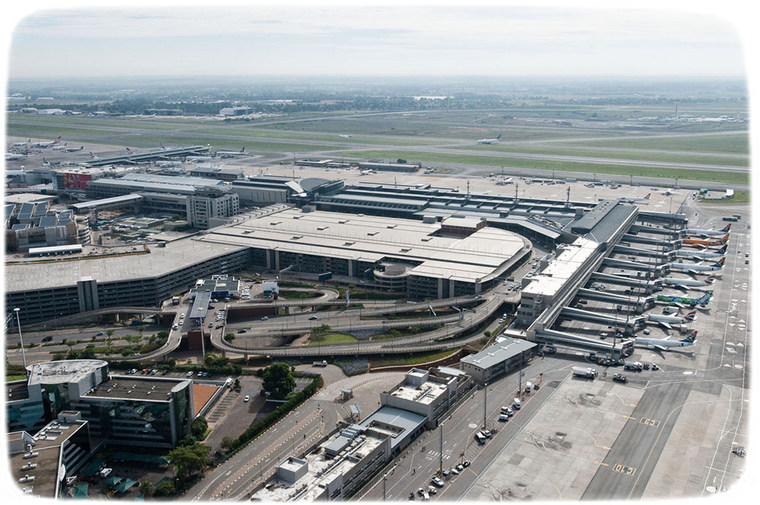
The Airports Company South Africa has welcomed the announcement by the Minister of Transport that three airports serving provincial centres will be opened for business travel from 1 July. The airports owned and operated by Airports Company South Africa that will be open for business travel from Wednesday are those that serve Port Elizabeth, Upington and Bloemfontein.
Spokesperson for Airports Company South Africa, Gopolang Peme, says managers and staff of the airports have been preparing and will have in place all the required measures before 1 July. "Airport management and staff have been getting ready for this moment for a few weeks now. They have implemented the extensive physical measures that are required by the regulations. Airport staff have been trained and are ready to activate the new procedures," says Peme.
He says Airports Company South Africa is acutely aware of the role that regional airports play in connecting the economy across provinces as well as the direct and indirect contribution that airports make to the GDP of their respective provinces. "We are therefore very much looking forward to playing our role in supporting the national efforts to reconnect, recover and rebuild economic activity," says Peme.
IS THIS THE END OF AIR NAMIBIA?
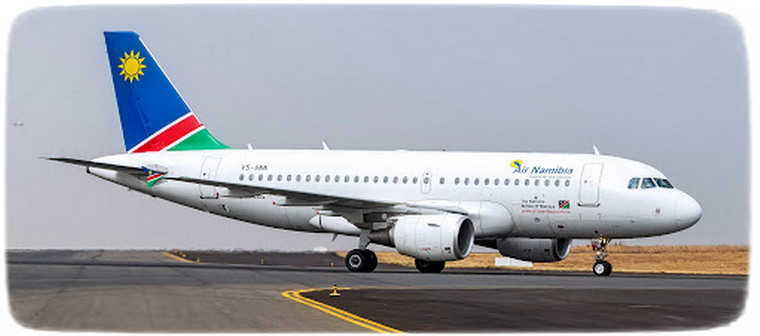
The Namibian Civil Aviation Authority has suspended Air Namibia's licence, citing among other the airlines failing a IOSA audit as well as the national carrier's financial status and safety and maintenance concerns. The notice effectively grounded the airline with only emergency flights being permitted.
This follows on from the recent statement by the Namibian president that the company should be liquidated. The 73-year-old airline was already suffering for long time before the COVID-19 crisis.
However, responding to an urgent application by Air Namibia, the Namibian High Court in Windhoek interdicted the Transportation Commission from implementing the licence suspension, declaring it "unlawful and invalid". The court ordered the respondents - the Transport Commission of Namibia, the Namibian Civil Aviation Authority, the Minister of Works and Transport and the Namibian Government - to show cause on August 3 why the interdict should not be made final.
In an earlier statement, Transportation Commission of Namibia chairperson, Eldorette Harmse, gave Air Namibia until July 22 to prove that it had enough funding to meet the requirements of the country's Air Services Licensing Act, failing which the air licence would be cancelled. It also demanded a full report on the findings of a Lufthansa audit done in January following allegations around safety, operations and finances.
Air Namibia has been operating scheduled domestic services since May 6 as that country scaled down its COVID-19 alert level, but as yet has not been operating commercial regional or international flights.
AS GOVERNMENTS LIFT LOCK-DOWN MEASURES, ETHIOPIAN ANNOUNCES RESUMPTION OF REGULAR SERVICE
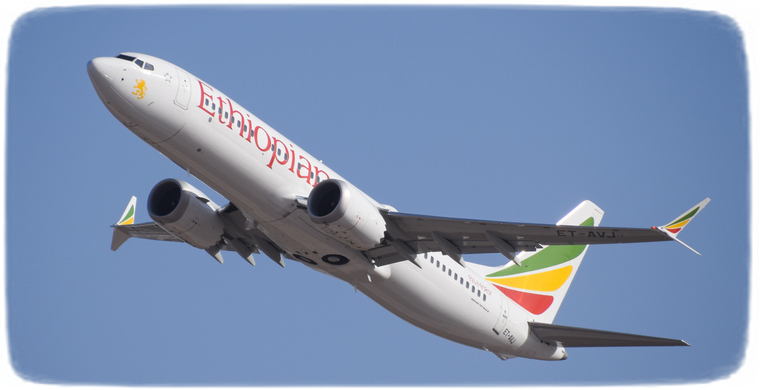
Ethiopian Airlines, Africa's largest airline, is resuming service to Dubai further to the ending of the lock-down and its opening for leisure travellers as of 8 July 2020.
Djibouti has also announced that it will end lock-down on 17th of July. As a result, Ethiopian will resume normal service to Djibouti on the 17th of July.
These resumptions will bring the total number of destinations to be served by Ethiopian with enhanced safety measures to 40. As countries continue to open-up their airports for passenger arrival, Ethiopian will announce list of these destinations in due course.
As countries continue to open their borders and relax travel restrictions, Ethiopian is ready to increase frequencies to accommodate the demand by focusing on the wellbeing of customers and staff. Ethiopian is happy to welcome back business and leisure travellers to these destinations.
QANTAS TO GIVE FINAL 747 JUMBO JET A FAREWELL FIT FOR A QUEEN
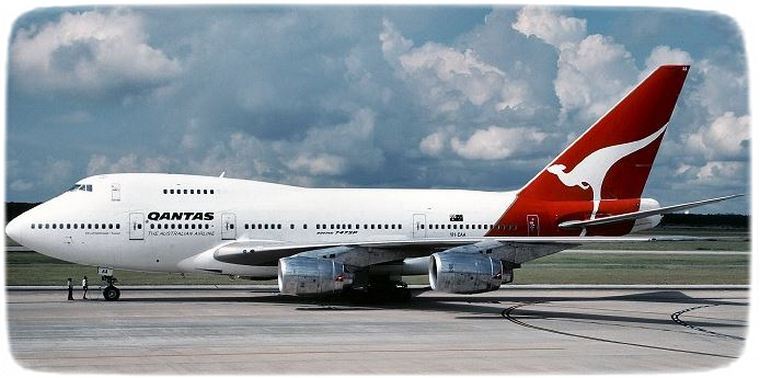
Qantas has announced a program of events to farewell its last remaining Boeing 747 and provide Australians the opportunity to say goodbye to the much loved "Queen of the Skies" ahead of its retirement from the national carrier's fleet.
The airline will operate three one-hour "farewell jumbo joy flights" departing from Sydney, Canberra and Brisbane, in response to requests from employees and customers for one final chance to fly on the aircraft.
Qantas 747 Fleet Captain Owen Weaver said the 747 has a special place in the hearts of many Australians.
"The 747 has been a magnificent aircraft and it's fitting that we celebrate the end of five decades of history-making moments for the national carrier and aviation in Australia," Captain Weaver said.
"Since the first 747 joined the Qantas fleet in 1971, these aircraft have operated numerous rescue flights to bring Australians home during times of crisis and provided a safe passage for many travellers taking their first international flight to or from Australia.
"These three flights will offer the final opportunity to fly on the Qantas 747 before it leaves, with some of our frequent flyers and aviation enthusiasts as fond of the aircraft as we are, having spent thousands of hours onboard over the years.
"There is an enormous amount of nostalgia and affection associated with our 747 and for those who miss out on a seat on the flight, they will at least be able to catch a glimpse of the aircraft as it takes to Australian skies for the last time."
The flights will go on sale at midday on Wednesday 8 July on Qantas.com and will operate on Monday 13 July (Sydney), Wednesday 15 July (Brisbane) and Friday 17 July (Canberra). Economy fares cost $400 and a small number of Business Class tickets will be available for $747 with additional extras included.
Seats will be limited to maximise passenger comfort (in line with other previously operated joy flights).
The flights will be operated on a cost-recovery basis and profits will be donated to the HARS Aviation Museum at Albion Park (Wollongong) and the Qantas Founders Museum in Longreach to support their efforts to preserve and promote the 747 legacy for future generations. Both museums have a Qantas 747 on public display.
The final 747-400 in the fleet will depart Sydney at approximately 2pm on 22 July 2020 as flight QF7474.
Prior to its final departure on the 22nd July, Qantas will host a hangar farewell event for employees.
LOT RESUMES FLIGHTS TO NORTH AMERICA AND ASIA

The first day of July was a special date for travel lovers. LOT resumed its first international flights since the suspension of passenger flights in mid-March. Our carrier is also expanding its range of destinations by adapting the schedule to current administrative regulations. As of the July, LOT's flight route network will include the first long-haul flights to Canada, South Korea and Japan, as well as flights to the UK, Albania, Montenegro and Ukraine.
The first passengers flew on board LOT planes to Berlin, Amsterdam, Düsseldorf, Barcelona, Prague, Budapest, Vilnius, Kiev, Dubrovnik and Split yesterday. As of today, they will be joined by travellers flying to Vienna and Oslo. From July 3rd, the summer campaign #SummerWithLOT begins and passengers can start planning their trips outside Europe as well. In accordance with the current administrative regulations, LOT's passenger flight schedules will be extended to the new destinations as of July. Our flight carrier will take passengers to three cities in North America and Asia.
All long-haul flights will be operated from Warsaw's Chopin Airport. In addition, LOT will also launch a Budapest-Seoul connection, offered once a week, from July 20th. Tickets for long- haul flights are now available in the booking systems and on lot.com.
Currently, entry restrictions apply to, among others, Cyprus, where a negative coronavirus test result is required, taken up to 72 hours before departure. The registration at www.travel.gov.gr and a special declaration must be completed at least 48 hours before departure to Greece.
Information on current safety procedures and restrictions in each country can be found on the websites of the International Air Transport Association [IATA], the Ministry of Foreign Affairs or the embassies, consulates and Ministries of Health of the countries considered as destinations.
AEROFLOT GROUP ANNOUNCES OPERATING RESULTS FOR MAY 2020

Aeroflot PJSC announced operating results for Aeroflot Group ("the Group") and Aeroflot - Russian Airlines ("the Company") for May and 5M 2020.
5M 2020 Operating Highlights
In 5M 2020, Aeroflot Group carried 11.7 million passengers, 47.8% down year-on-year. Aeroflot airline carried 7.3 million passengers, a year-on-year decrease of 49.7%.
Group and Company RPKs decreased by 48.1% and 49.8% year-on-year, respectively. ASKs decrease by 40.9% year-on-year for the Group and by 40.7% year-on-year for the Company.
The passenger load factor decreased by 9.4 p.p. year-on-year to 68.8% for Aeroflot Group and decreased by 11.8 p.p. to 64.6% for Aeroflot airline.
May 2020 Operating Highlights
In May 2020, Aeroflot Group carried 305.6 thousand passengers, a year-on-year decrease of 93.9%. Aeroflot airline carried 206.3 thousand passengers, a year-on-year decrease of 93.1%.
Group and Company RPKs were down 94.2% and 93.8% year-on-year, respectively. ASKs decrease by 90.2% for Aeroflot Group and by 89.5% for Aeroflot airline.
Aeroflot Group's passenger load factor was 45.4%, representing a 31.6 p.p. decrease versus the same period a year earlier. The passenger load factor at Aeroflot - Russian Airlines decreased by 30.1 p.p. year-on-year to 44.1%.
Impact of coronavirus pandemic
In 5M and May 2020, operating results were affected by the dynamics of demand and significant flight restrictions imposed amid the spread of the novel coronavirus infection. In addition to the suspension of scheduled international flights, quarantine restrictions in Russia and passengers' propensity to travel amid pandemic affected the decline in domestic traffic indicators.
In June Aeroflot Group began to gradually restore operating volumes due to the partial lifting of restrictions. The restoration of flights is accompanied by a progressive increase in the passenger load factor.
Fleet update
There were no changes in Aeroflot Group fleet in May 2020. As of 31 May 2020, Group and Company fleet had 360 and 246 aircraft, respectively.
AIR NEW ZEALAND LIMITS CAPACITY ON INBOUND INTERNATIONAL SERVICES
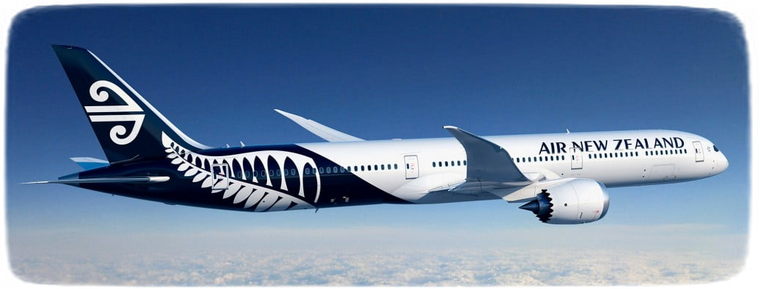
Air New Zealand has put a hold on new bookings on international services into New Zealand following a request from the New Zealand Government.
The move is to help ensure the country is able to provide quarantine accommodation for inbound passengers for the required 14-day period.
As well as the temporary hold on new bookings for the next three weeks, the airline is also looking at aligning daily arrivals with the capacity available at managed isolation facilities. This may mean some customers will need to be moved to another flight.
Air New Zealand Chief Commercial and Customer Officer Cam Wallace says the airline has been working closely with the government to understand how it can support the government's efforts to contain COVID-19 at the border.
"We accept this is a necessary short-term measure given the limited capacity in quarantine facilities and we're keen to do what we can to help New Zealand's continued success in its fight against COVID-19."
Outbound Air New Zealand services from New Zealand to international ports are not affected by the New Zealand Government restrictions. Domestic services are not impacted.
LUFTHANSA LAUNCHES SECOND SET OF MEASURES OF ITS RESTRUCTURING PROGRAMME, AFFECTING PEOPLE AND FLEET
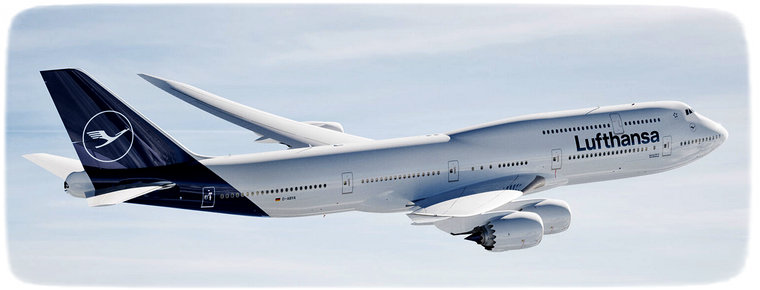
The Executive Board of Deutsche Lufthansa AG has approved a second set of measures as part of its overall restructuring programme in the wake of the coronavirus crisis. With the first set of measures launched in early April it had been decided, among other things, to reduce the fleet by 100 aircraft and not to resume the flight operations of Germanwings.
Following the approval by Lufthansa shareholders of the stabilisation measures of the German federal government and the commitments made by the governments of Austria and Switzerland, the group's financing is currently secure.
The comprehensive restructuring program entitled "ReNew" is scheduled to run until December 2023 and is headed by Dr. Detlef Kayser, Member of the Lufthansa Group Executive Board and responsible for Airline Resources & Operations Standards. It also includes restructuring programs that are already underway at the group's airlines and service companies. These will continue unchanged.
Following the downsizing of the Executive Board of Deutsche Lufthansa AG, the executive board and management bodies of the subsidiaries will be reduced in size compared with 2019. In a first step, the number of board members was reduced by one position each at Lufthansa Cargo AG, LSG Group, and Lufthansa Aviation Training.
The number of leadership positions throughout the Group will be reduced by 20 percent. The administration of Deutsche Lufthansa AG will be reduced by 1,000 positions. The process of transforming Lufthansa Airline into a separate corporate entity is being accelerated.
The already planned reduction of sub-fleets and the bundling of flight operations will be implemented. This measure includes the long- and short-haul leisure business at the Frankfurt and Munich hubs. At Lufthansa alone, 22 aircraft have already been phased out ahead of schedule, including six Airbus A380, eleven Airbus A320 and five Boeing 747-400 aircraft.
The financial planning up to 2023 provides for the acceptance of a maximum of 80 new aircraft into the Lufthansa Group carriers' fleets. This will reduce the investment volume for new aircraft by half.
Due to the long-term effects of the coronavirus pandemic, which are particularly serious for air travel, there is a calculated personnel surplus of at least 22,000 full-time positions in the companies of Lufthansa Group even in the period following the crisis. Nearly all airlines worldwide are currently affected by personnel surplus. In contrast to many of its competitors, Lufthansa will continue to avoid layoffs wherever possible. This requires agreements on crisis-related measures with unions and social partners representing the Lufthansa employees. So far, negotiations have only been successful with the UFO cabin union.
RYANAIR AND ITS IRISH PILOTS AGREE ON PAY CUTS TO SAVE IRISH PILOT JOBS
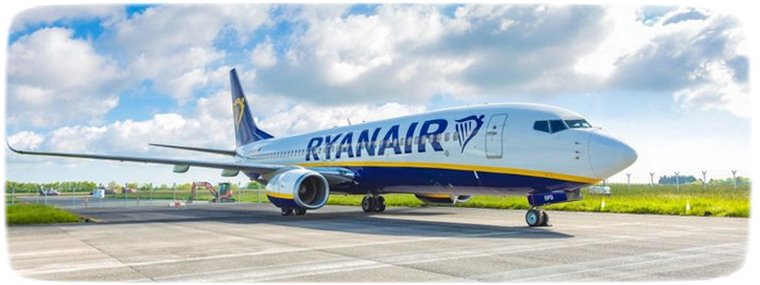
Ryanair welcomed acceptance by 100% of its Irish Pilots of a 4-year agreement which includes a 20% pay reduction, restored over 4 years, along with productivity improvements on rosters, flexible working patterns and annual leave to minimise Irish Pilot job losses. This agreement gives Ryanair a framework to flex its operation during the Covid-19 crisis and a pathway to recovery when the business returns to normal in the years ahead.
Earlier this week BALPA and Ryanair UK pilots accepted a similar deal to save jobs also with 20% pay cuts and productivity improvements.
Ryanair has also signed agreements with the Fórsa union for our Irish based cabin crew and the UNITE union for our UK cabin crew on up to 10% pay reductions, fully restored over 4 years as well as productivity improvements to save jobs. These cabin crew agreements are currently out to ballot.
These agreements demonstrate that Ryanair Pilots wish to work with the airline during the Covid-19 crisis where Ryanair will carry 50% less traffic, at significantly lower fares for the foreseeable future.
FIRST METAL CUT FOR THE FIRST A321XLR'S REAR CENTRE TANK AT AIRBUS MANUFACTURING SUBSIDIARY PREMIUM AEROTEC
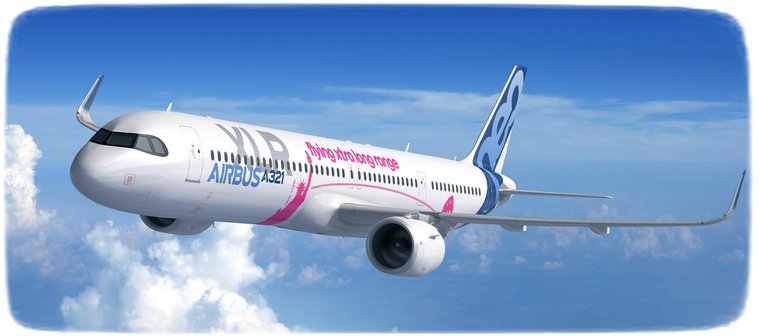
Airbus' manufacturing subsidiary Premium AEROTEC in Augsburg, Germany has commenced production of the first Rear Centre Tank (RCT) for the Airbus A321XLR.
The "first metal cut" - the production of the first machined part for the tank - took place on 25 June 2020. The RCT, which is unique to the new long-range A321XLR, is a permanently installed high-capacity fuel tank that makes maximum volumetric use of the aircraft's lower fuselage. The RCT structure, which is integrated in fuselage Sections 15 and 17, is located behind the main landing gear bay and holds up to 12,900 litres - which is more fuel than several optional Additional Centre Tanks (ACTs) combined could hold previously in the A321 Family. Moreover, since the RCT takes up less space in the cargo hold, it frees-up underfloor volume for additional cargo and baggage on long range routes of up to an unprecedented 4,700nm.
Airbus' manufacturing subsidiary Premium AEROTEC in Augsburg, Germany has commenced production of the first Rear Centre Tank (RCT) wall section for the Airbus A321XLR.
Premium AEROTEC, which was commissioned by Airbus in September 2019 to manufacture the RCT, will complete the structure's sub-assembly over the next few months at its factory in Augsburg, Germany. This phase involves production of the other RCT parts, followed by structural assembly, systems equipping and testing prior to delivery to Airbus' major component assembly (MCA) facility in Hamburg early next year, where the tank will be integrated into the aircraft's rear fuselage.
In addition to the dedicated RCT, other key changes for the A321XLR include a modified landing gear for an increased maximum take-off weight (MTOW) of 101 metric tonnes, uprated brakes, and an optimised wing trailing-edge flap configuration to preserve the same take-off performance and engine thrust requirements as today's A321neo. By early 2020, the first long-lead components for the initial A321XLR flight-test aircraft were already in production - including the main landing gear forgings by Safran and the first parts for the centre wingbox by Airbus in Nantes.
The A321XLR, the next evolutionary step in Airbus' single-aisle family, has been designed to maximise overall commonality with the rest of the A320neo Family, while introducing minimal changes needed to give the aircraft an Xtra Long Range with increased revenue payload and best travel experience with the Airspace cabin. To date, 24 customers have ordered a total of more than 450 A321XLRs, validating the market need for the unique capabilities offered by this aircraft. Flight-testing is due to start in 2022, and service entry from 2023. The A321XLR will provide airlines with a range of up to 4,700nm and a 30% lower fuel burn and CO2 emissions per seat compared with previous-generation competitor aircraft.
SINGAPORE AIRLINES SECURES S$10 BILLION IN FRESH LIQUIDITY

Singapore Airlines (SIA) announced that the Company has raised S$10 billion of liquidity through its recent Rights Issue, as well as a mix of secured and unsecured credit facilities. This puts SIA on a steady footing as it tackles the challenges posed by the global Covid-19 outbreak.
SIA secured S$8.8 billion in liquidity through the successful completion of the rights issue on 5 June 2020. A further S$900 million was raised through long term loans secured on some of SIA's Airbus A350-900 and Boeing 787-10 aircraft.
In addition, the Company has also arranged new committed lines of credit and a short term unsecured loan with several banks, which provide further fresh liquidity amounting to more than S$500 million.
Separately, all existing committed lines of credit that were due to mature during the course of 2020 have been renewed until 2021 or later, thus ensuring continued access to more than S$1.7 billion in liquidity.
During this period of high uncertainty, SIA will continue to explore additional means to shore up liquidity as necessary. For the period up to July 2021, the company also retains the option to raise up to a further S$6.2 billion in additional mandatory convertible bonds, which will provide additional liquidity if necessary.
Singapore Airlines Chief Executive Goh Choon Phong said. "We are grateful for the strong support of our shareholders for our successful rights issue, which has secured the company's future amid an unprecedented global health and economic crisis. We are also grateful to our relationship banks for their support in extending additional secured and unsecured loans, as well as committed lines of credit. SIA will remain steadfast and agile during this period of great uncertainty, and continue to act nimbly in responding to the evolving market conditions."
ATR ACHIEVES MAJOR MILESTONE IN CHINESE CERTIFICATION
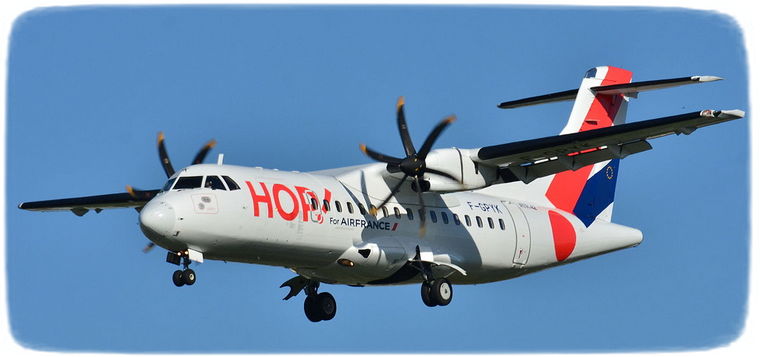
As part of the validation for the certification process of the ATR 42-500 with modification 5948 in China, a certification flight test took-off and landed from Francazal airport in Toulouse. The flight, which took place on Friday 3 July, is a major step toward ATR type certification validation in China, expected in autumn 2020.
The ATR 42-500 with modification 5948 is also known as the ATR 42-600 and certification will allow the first delivery of this latest generation aircraft to a customer in China. The three-hour test was performed in cooperation with the Chinese and European airworthiness authorities CAAC (Civil Aviation Administration of China) and European Union Aviation Safety Agency (EASA), the latter of whose pilots were on-board the flight alongside an ATR crew.
China is looking to expand its connectivity, with 100-seat-below regional aircraft representing only 2.5% of the overall Chinese fleet, compared to a worldwide average of 25%. In 2019, China had 238 airports though 83% of Chinese traffic is concentrated through just 39 airports each with over 10 million passengers per year. While 164 regional airports, accounting for 7% of total passenger traffic, would benefit from quick and reliable connections. Given the distances involved there is a need for a versatile aircraft to operate these routes. An ATR 42-600 in a 30-seat General Aviation configuration would be an ideal solution to provide this essential connectivity and increase the local economy.

|
                    |























